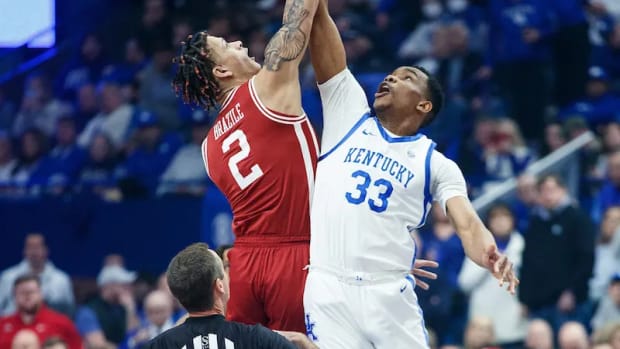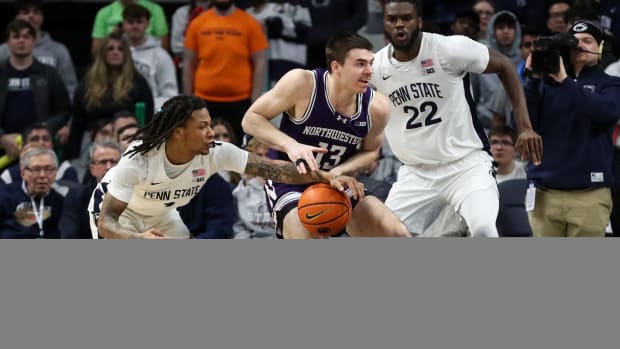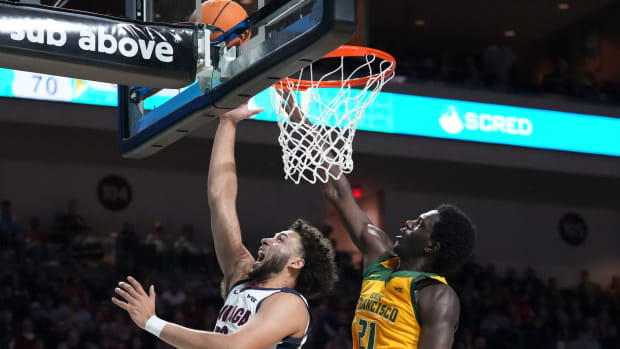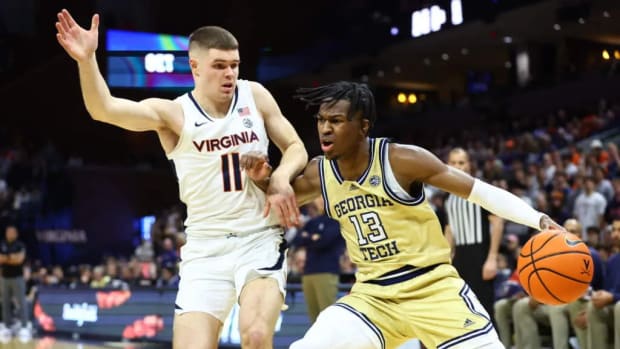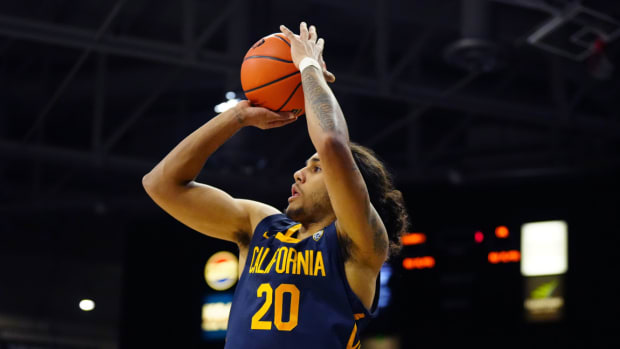Where does this Syracuse squad rank among its past Final Four teams?
But as the fifth Syracuse team to make the Final Four, the 2012-13 Orange seem destined to go down more for their overall balance than individual stars. Syracuse has a recognized shooter in James Southerland, but the senior forward can't begin to match the proficiency of some past Syracuse marksman, most specifically, Gerry McNamara (now an assistant coach) who for three straight seasons ('04, '05 and '06) led the team in three-pointers. It has a recognized all-around scorer in forward C.J. Fair, yet in Jim Boeheim's tempo-controlled offense, he won't climb anywhere near the top of the all-time Orange scoring list.
But defense? That's another story, which we'll get back to.
It's interesting how many great Syracuse players never even made it to the Final Four, never mind win a championship. That list includes the immortal Dave Bing, whose backcourt mate in the mid-1960s was named Boeheim; Louis Orr and Roosevelt Bouie, the so-called "Louie and Bouie Show" that made 'Cuse relevant in the late 70s; Pearl Washington, whose flash and dash kept 'Cuse on the national basketball map; Billy Owens, as talented an all-around player Syracuse has ever had; and Lawrence Moten, arguably the most forgotten player in Syracuse history, who between 1991 and 1995 averaged almost 20 points a game to finish with 2,334 points, all-time best not only at Syracuse but also in the Big East.
So where does this team rank compared to the other quartet of Final Four Teams? Here's a brief look at the others.
1974-75
Finishing at a mediocre 23-9, this team was a surprise, filling out the Final Four with national powers UCLA (champion), Kentucky (runner-up) and Louisville (which beat 'Cuse in the third-place game). "Roy's Runts" were led by forward Rudy Hackett, who during that season averaged 22 points a game on 58 percent shooting from the field, and guard Jim Lee, who had an outstanding NCAA tournament. That Cinderella team made Roy Danforth a hot product on the coaching circuit and after the '75-'76 season he was hired away by Tulane. That gave the reins to Danforth's young and untested assistant, Boeheim.
1986-87
This is the star-crossed team that sticks most vividly in memory. Five players who had NBA careers. A lineup that featured five starters in double figures. Four players who are easily conjured up as among the most recognizable in Syracuse history -- Douglas, Derrick Coleman, Rony Seikaly and Stevie Thompson. And a player with ancestral ties to the current team -- Howard Triche.
But to turn any disquisition about this team sour, you only have to mention one other name -- Indiana's Keith Smart. It was his corner jumper that beat 'Cuse in the championship final.
1995-96
It's hard to call John Wallace "overlooked" -- he is the fourth leading scorer and third leading rebounder in school history -- but he does finish well behind another power forward, Coleman, in terms of recognition. But it was Wallace's consistency that helped 'Cuse get to Boeheim's second final against a Rick Pitino-coached Kentucky team with a bushelful of future pros, including Tony Delk, Antoine Walker and Walter McCarty. The Wildcats won that game 76-67. Along the NCAA trail, Syracuse also beat another talent-heavy team in Kansas, which had Paul Pierce, Raef LaFrentz and Jacque Vaughn.
2002-03
This is the "at-last" team. Unranked in the preseason, Syracuse understood what it had in Carmelo Anthony, who made his only year on campus a memorable one. He averaged 22 points and 10 rebounds in leading the Orange to the national title. McNamara's magical three-point shooting was also a big factor, as well as the steadiness of Hakim Warrick.
Rankings
1. 2002-03
You have to put the team that won it all in first, right?
2. 1986-87
Syracuse was better than Indiana; probably even Bob Knight wouldn't argue that. (All right, he probably would.) But the Orange didn't get it done. A number that haunts: 11-of-20 from the free throw line in the final.
3. 2012-13
Obviously, this team still has something to prove. But the Boeheim 2-3 zone just keeps getting better as evidenced by its play throughout the East Regional. Yes, the team has a shaky rotation below the top seven, but that's rarely a problem in a Final Four with TV timeouts and a slower pace.
4. 1995-96
Had it done a better job on Delk, who finished with 24 points, the final could've turned out differently and might've represented one of the great championship upsets in history. That Wildcat team was looked upon much the same way as the 2012 champions.
5. 1974-75
All due props to the scrappers but none of them went on to have any kind of pro career, including Hackett, who played one season in the ABA and one in the NBA. But Lee had an impact, believe it or not, on this year's team. He headed up a group of former players (that also included Howard Triche) who asked the current team to consider standing at attention during the national anthem, rather than wrapping their arms around each other's shoulders, as was their custom. Lee's father lost both of his legs while serving in the Coast Guard. The team complied.

